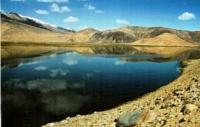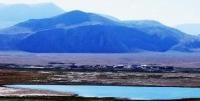You are here
Bulunkul Lake.


Lakes on Pamir in Tajikistan.
“Although there is no object in the world that is weaker and more tender than water, but it can destroy the hardest object”
Lao Tzu.
Leisure destinations in Tajikistan.
Bulunkul (Tajik: Bulunkul) is a fresh lake of tectonic origin located in the Murghab region of the Gorno-Badakhshan Autonomous Region of Tajikistan at an altitude of 3737.4 meters above sea level. The lake is located in the latitudinal intermountain basin formed by the ridge, in the north - the North Alichursky and in the southeast mountain range Bagchagir.
In the east, beyond the mountains of Gan, the Alichur Valley begins. The main food of the lake is provided by the Koytezak River and to a small extent by numerous springs on the banks. The Issyk-Bulok River flows into the lake, forming a swampy delta.
On the south coast is the spring of Suok. Lake Bulunkul is connected by a channel with the neighboring lake Yashilkul located in the northeast at 2 kilometers. The total area of Lake Bulunkul is 3.4 kilometers square.
The maximum depth of the lake is 2 meters. The transparency of the water is more than 1 meter. The length of the lake is 3453 meters. width in the middle of 1183 meters. In the area of the lake, air temperature reaches 18 - 20 ° in the summer and −25 - 30 ° in the winter.
Since mid-autumn, the lake is covered with a layer of ice up to 120 centimeters thick, which lasts almost until the end of May. During a study of the algoflora of the lake (2014) for species composition, 253 species of aquatic organisms were found, including 302 species and forms of algae, 69 species (76 species and forms) of blue and green Cyanophyta, and 124 species (162 species and forms) of diatoms Bacillariophyta, which are the largest of all detected taxa and account for 53.8% of the total, 55 species (59 varieties and forms) of green Chlorophyta and five species of Euglenophytes (Euglenophyta). Phytoplankton samples for research were taken directly in the water column of Lake Bulunkul.
According to the classification of natural waters according to the allocation of hydrochemical facies of G. A. Maksimovich, Bulunkul enters the zone of mountainous territories of a hydrocarbonate hydrochemical formation with a predominance of calcium carbonate waters.
There are many aquatic plants in the lake; often you can see ducks, geese floating on the surface of the lake, and gulls. For the first time, fishing was organized in Pamir on Bulunkul. From May to September – October, fishermen set nets at the necks of rivers flowing into the lake and catch osman and marinka.
The best time to visit the lakes is July – September. You can stay for the night in the village of Bulunkul, located next to the lake of the same name, where there is a guest house.
Authority:
Alexander Petrov, Wikipedia
Photos by
Alexander Petrov.







